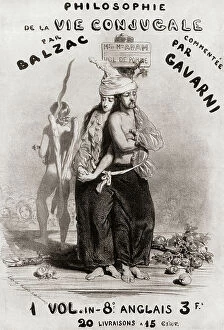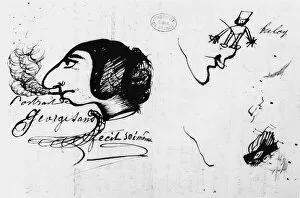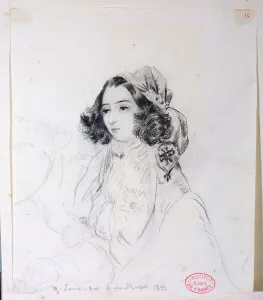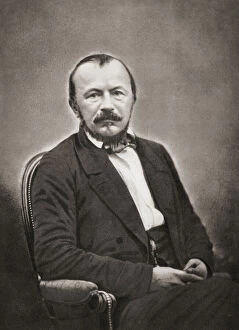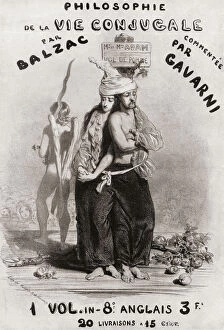Nom De Plume Collection
"Exploring the Enigmatic World of Nom de Plume" Aristolochia, a captivating plant genus known for its intricate watercolor-like patterns
All Professionally Made to Order for Quick Shipping
"Exploring the Enigmatic World of Nom de Plume" Aristolochia, a captivating plant genus known for its intricate watercolor-like patterns, mirrors the allure and mystery behind the concept of nom de plume. Just as Aristolochia captivates with its unique beauty, writers throughout history have embraced pseudonyms to add an air of intrigue to their literary endeavors. One such writer was George Sand, who defied societal norms by adopting a masculine pen name while smoking her pipe in self-caricature. Her pencil sketches further unveil her complex persona - from a seated figure exuding confidence in an armchair to donning a headscarf that symbolizes both rebellion and femininity. Intriguingly, George Sand's connection with Marie de Flavigny, Countess of Agoult, adds another layer to her enigmatic identity. Together they navigated the literary world under different names but shared a profound bond that transcended mere words on paper. Voltaire, another luminary in literature's hall of fame, chose his nom de plume as Francois-Marie Arouet. This French Enlightenment writer left an indelible mark through his philosophical musings and historical writings. His chateau at Ferney stands as a testament to his intellectual legacy. Meanwhile, GA&rave;rard Labrunie found solace under the guise of GA&rave;rard de Nerval - poet extraordinaire and masterful translator. His contemporary print captures his essence perfectly: mysterious yet brimming with creativity. The artistry surrounding these pseudonyms extends beyond writing itself; it permeates into various forms like oil paintings and lithographs. Portraits immortalize figures like George Sand on canvas while Paul Gavarni's illustrations bring life to "Philosophie De La Vie Conjugale" by Honoré de Balzac - himself no stranger to using alternate identities.


